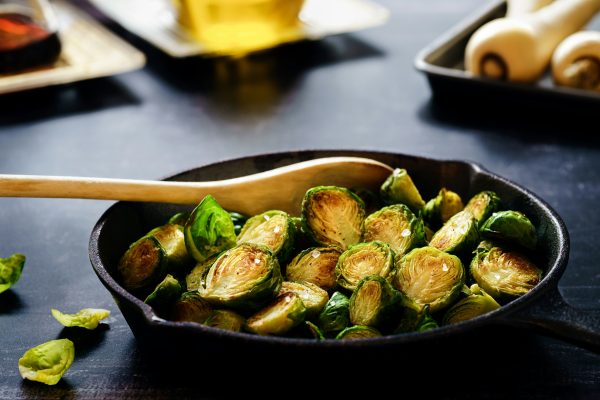The world of ultra cycling is a testament to the incredible endurance and determination of the human spirit. It’s a sport that pushes me to my limits, challenging me to pedal through hundreds of miles, often in a single stretch. But what happens when an ultra cyclist like me faces an additional hurdle, one that isn’t just about distance or terrain, but about my own body fighting against me? This is my story and that of many others who not only confronts the grueling demands of the cycling sport but does so while managing psoriatic arthritis (PsA). In this article I would like to tell you about how anti-inflammatory food, combined with the right medication, helped me to achieve my ultra cycling dreams and to fight my psoriatic arthritis symptoms.
What is PSA or Psoriatic arthritis?
Psoriatic arthritis is a chronic condition characterized by inflammation of the skin and joints, leading to pain, stiffness, and swelling. It’s a battle that requires strength, not just physically but mentally and emotionally. Yet, for me as a cyclist, PsA is not a roadblock but a challenge to be met with resilience and strategy.

The importance of anti-inflammatory food fighting psoriatic arthritis
One of the most effective weapons in my cycling arsenal is my diet, specifically tailored to combat inflammation. Anti-inflammatory foods play a crucial role in managing my PsA symptoms, helping to keep inflammation and pain at bay. Omega-3 fatty acids, found in fatty fish, hemp seeds and edamame, are a cornerstone of this anti-inflammatory diet. These powerful nutrients can reduce disease activity and joint tenderness, which is crucial for an athlete who relies on their joints to power through each ride.
Antioxidants are another key component, acting as the body’s defense against oxidative stress caused by chronic inflammation. A diet rich in fresh fruits, vegetables, nuts, and spices ensures a steady supply of these protective compounds. Foods like dark chocolate, leafy greens, and coffee are not just indulgences but part of a strategic approach to maintaining joint health and overall well-being.
High fiber whole grains like oats, quinoa, and brown rice also play a role in this balanced diet, helping to manage blood sugar levels and reduce the risk of heart disease. For me as an ultra cyclist, every aspect of health is crucial, and a diet that supports cardiovascular function is as important as one that keeps joints flexible and responsive.
But it’s not just about what to include; it’s also about knowing what to limit. Red meat and dairy, for instance, can contribute to inflammation and are therefore consumed in moderation. Instead, the focus is on a variety of foods that provide the nutrients needed to support an active lifestyle while managing PsA. Anti-inflammatory food having psoriatic arthritis just helps me to achieve my goals and to reduce the pain.
Let’s take a deeper look at the anti-inflammatory food I regularly consume in order to fight my psoriatic arthritis symptoms. And you can be sure… I also have my fair deal of French fries, beer, mayonnaise and my guilty pleasure salted butter once in a while…but it’s all about balance and moderate consumption.

My favorite anti-inflammatory food to battle psoriatic arthritis
Inflammation: it’s a natural response by your body to protect itself. But when inflammation becomes chronic, it can contribute to a myriad of health issues. That’s where the power of anti-inflammatory food comes into play to battle against the symptoms of psoriatic arthritis. The right foods can be potent allies in your battle against inflammation, helping to alleviate symptoms and improve overall health.
Berries: Nature’s Sweet Defense
Berries are not just delicious; they’re also packed with antioxidants and vitamins. Varieties like strawberries, blueberries, raspberries, and blackberries are rich in anthocyanins, compounds that have anti-inflammatory effects. These tiny powerhouses can help reduce the risk of disease and may even support the immune system.

The Mighty Omega-3s: Fatty Fish
Fatty fish such as salmon, sardines, herring, mackerel, and anchovies are excellent sources of omega-3 fatty acids. These essential nutrients are metabolized into compounds that help reduce inflammation. Regular consumption of these fish can lead to lower levels of inflammatory markers like C-reactive protein, making them a must-have in any anti-inflammatory diet.
Cruciferous Vegetables: The Super Greens
Broccoli, kale, Brussels sprouts, cabbage, and cauliflower belong to the cruciferous vegetable family. They’re not only nutrient-dense but also associated with a lower risk of heart disease and cancer. Their anti-inflammatory properties come from a wealth of vitamins, minerals, and antioxidants. It makes them them a crucial part of an anti-inflammatory eating plan.

Healthy Fats: Olive and Avocado Oils
Healthy fats are essential, and olive oil and avocado oil stand out for their anti-inflammatory benefits. They’re rich in monounsaturated fats and contain antioxidants that can help reduce inflammation. Incorporating these oils into your diet can be as simple as using them for cooking or as a salad dressing base.
Nuts and Seeds: The Crunchy Contenders
Almonds and other nuts are not just a great snack; they’re also full of healthy fats, fiber, and protein. They can help fight inflammation and provide a satisfying crunch that’s both nutritious and delicious.
The Dark Delight: Chocolate
Yes, even chocolate can be part of an anti-inflammatory diet, provided it’s dark chocolate with a high cocoa content. Dark chocolate is rich in flavonoids, antioxidants that help reduce inflammation. It’s a treat that can be both indulgent and beneficial.

A story of hope
Embracing a diet rich in anti-inflammatory foods can be a game-changer for those managing psoriatic arthritis. Foods high in omega-3 fatty acids, like fatty fish, and those bursting with antioxidants, such as colorful fruits and vegetables, reduce inflammation. They may also alleviate the symptoms associated with this condition. Whole grains are another ally, helping to manage blood sugar levels and reduce inflammation. Yet, it’s human to crave variety, and occasionally indulging in less healthy options is part of life’s balance. The key is to listen to your body and understand how different foods affect you personally. While maintaining a diet that predominantly features anti-inflammatory foods, it’s okay to acknowledge that sometimes we all enjoy a treat that might not be on the ‘best foods’ list. It’s about finding that harmony between nourishment and enjoyment. Just ensure that the scales tip in favor of your health and well-being.
As a cyclist having psoriatic arthritis I want to carry a message of hope and determination. I want to show you that with careful planning, a supportive community and a deep understanding of one’s own body, anything is possible. I am not defined by psoriatic arthritis; they redefine what it means to live with it. If you have question about psoriatic arthritis, cycling or anti-inflammatory food…feel free to contact me.

